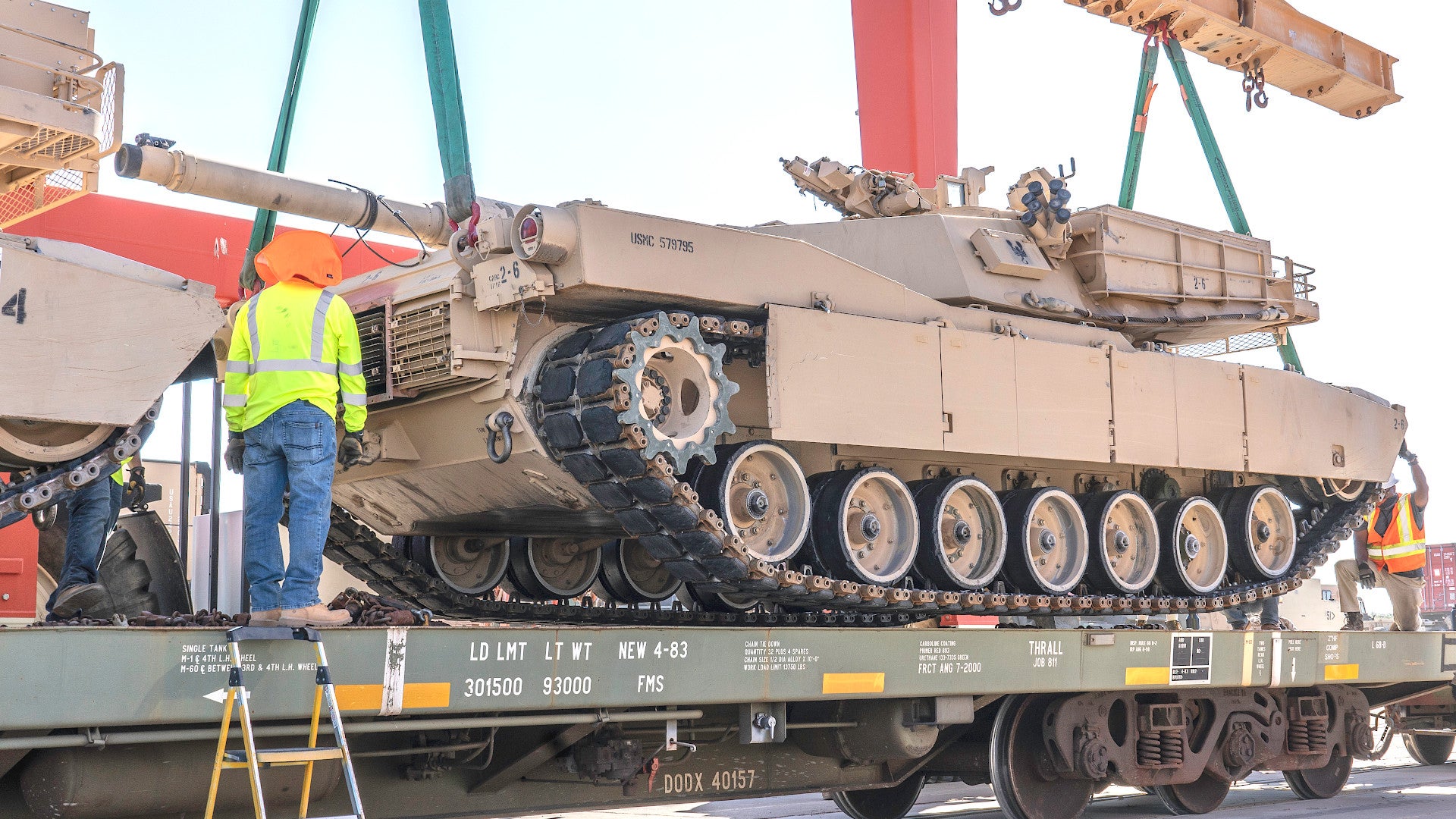There are no more M1 Abrams tanks at the U.S. Marine Corps’ base at 29 Palms in California, one of the service’s premier training facilities and its largest base anywhere. The Marines have been retiring M1s, as well as M88 armored recovery vehicles and Armored Vehicle Launched Bridges, and shuttering armored units all month as part of a radical new force structure plan that Marine Corps Commandant General David Berger publicly unveiled in March.
The last M1 Abrams left 29 Palms on July 6, 2020. These tanks had been on the base assigned to the 1st Tank Battalion, 1st Marine Division and to the Exercise Support Division, part of the Marine Corps Air Ground Combat Center. The Marine Corps has also been in the process of closing out elements of the 4th Battalion, part of the Marine Corps Forces Reserve (MARFORRES), and eliminating the heavy armored vehicles that Marine Corps Logistics Command has in its possession over the course of this month.

The Marines have been consolidating the retired M1s from all of these units, along with their M88s and Armored Vehicle Launched Bridges (AVLB) – some 200 vehicles in total – at Marine Corps Logistics Base Barstow (MCLB Barstow) in California. From there, the service has been sending them by train to the U.S. Army’s Sierra Army Depot in California and Anniston Army Depot in Alabama.
Sierra Army Depot is a storage facility where, among other things, the Army also keeps the primary production tooling for the F-22 Raptor stealth fighter. Anniston Army Depot is that service’s premier armored vehicle maintenance facility.
The Marine Corps plans to eventually divest the entirety of its M1 fleet, more than 400 vehicles in total, as part of the new Force Design 2030 plans, which you can read about in more detail in this past War Zone piece. The remaining tanks, including those belonging to the 2nd Tank Battalion, part of the 2nd Marine Division at Camp Lejeune in North Carolina, and other MARFORRES elements, will travel by train and truck to the Army’s depots.
“Installations such as Camp Lejeune, North Carolina; Blount Island Command, Jacksonville, Florida; and Marine Corps Logistics Base Albany, Georgia will most likely be shipping their tanks by rail, as well,” Chad Hildebrandt, Railway Operations supervisor at MCLB Barstow said in an interview for a recent official news story. “Smaller locations that house tanks for MARFORRES will be making individual decisions based off of rail versus commercial truck use cost analysis.”

The 4th Tank Battalion, which has six tank companies, in addition to its headquarters company, scattered across the country, is scheduled to stand down for good in 2021. The schedule for shuttering the rest of the Marine Corps’ tank-equipped units is not yet publicly known.
In addition, while the service is getting rid of M88s and AVLBs as part of this process, it’s not clear if the Marine Corps is planning to also divest their M1-based M1150 ‘Shredder’ Assault Breacher Vehicles (ABV). The M1150, which you can read about more in this past War Zone story, is designed to clear mines and other obstacles and could still be valuable to the Corps’ future expeditionary concepts of operation, which will still involve amphibious landings, as well as Marines riding in amphibious armored vehicles and other lighter vehicles.

The same questions apply to the AVLBs. The Marine Corps does still have some number of Cold War-era M60 tank-based AVLBs in inventory. The Marines had also previously planned to adopt the M1-based M1074 Joint Assault Bridge (JAB), which the Army has been developing since 2016 as an alternative to the M104 Wolverine, which that service determined to be too costly to operate and maintain. The Corps had 29 JABs on order as of 2017 and the future of those vehicles is now uncertain.



The Army has not yet said what it plans to do with the former Marine tanks and other heavy armored vehicles. Some of these could bolster its own fleets or get refurbished and sold off to allies and partners. Australia’s M1A1 AIM tanks, for instance, are refurbished ex-Army and Marine vehicles.
It remains to be seen when the Marine Corps will actually retire the last of its M1s, but the elimination of the tanks at 29 Palms, where the service conducts many of its routine large scale training exercises, underscores how quickly the service is moving to implement Commandant Berger new vision.
“Remember that our tanks were just weapon systems,” Marine Corps Captain Mark Rothrock, commander of Company A, 4th Tank Battalion, said during that unit’s inactivation ceremony on July 18. “[Tanks are] a damn fine weapon system, but nonetheless, just equipment. You individual Marines were always the key to the company’s success.”

When the Marines do get rid of their last M1s, it will bring to a close nearly a century of tank operations for the service, which established its first tank unit in December 1923 following experience it had gained while conducting operations with first-generation tanks in Europe during World War I. The Marines received their first M1A1s in 1989.
The Marines’ history with tanks now seems to be rapidly moving through its twilight period as the service looks to dramatically restructure itself as a lighter, more agile force focused on future expeditionary operations.
Contact the author: joe@thedrive.com
